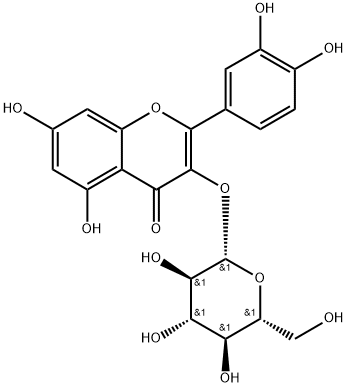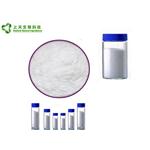Chemical Properties
White to Light Yellow Powder
Uses
Quercetin 3-β-D-glucoside has been used:
- as a dietary flavonoid supplement to check its binding capacity with human small ubiquitin-related modifier 1 (SUMO1) protein using surface plasmon resonance (SPR)
- as an inhibitor for Escherichia coli adenosine triphosphate (ATP) synthase
- as an anti-aggregation agent to test its activity against β-amyloid, green fluorescent protein?(GFP), and chymotrypsinogen proteins
Uses
Isoquercitrin was used as standard to compare the retention time of samples for identifying chromatographic peaks during flavonoid identification by Orbitrap UHPLC-MS/MS analysis.
Definition
ChEBI: Quercetin 3-O-beta-D-glucopyranoside is a quercetin O-glucoside that is quercetin with a beta-D-glucosyl residue attached at position 3. Isolated from Lepisorus contortus, it exhibits antineoplastic activityand has been found to decrease the rate of polymerization and sickling of red blood cells It has a role as an antineoplastic agent, a plant metabolite, a bone density conservation agent, an osteogenesis regulator, an antioxidant, a histamine antagonist, an antipruritic drug and a geroprotector. It is a quercetin O-glucoside, a tetrahydroxyflavone, a beta-D-glucoside and a monosaccharide derivative. It is functionally related to a beta-D-glucose. It is a conjugate acid of a quercetin 3-O-beta-D-glucopyranoside(1-).
General Description
Produced and qualified by HWI pharma services GmbH.
Exact content by quantitative NMR can be found on the certificate.
Biochem/physiol Actions
Quercetin 3-β-D-glucoside possesses strong antioxidant and anti-inflammatory activities. Being a potent oxygen-radical scavenger, it is a neuroprotective agent that improves Alzheimer′s disease (AD) condition in mice models. It has shown antiproliferative activity against colon, lung, and hepatocellular cell lines and MCF-7 human breast cancer cells in combination with apple extracts.




